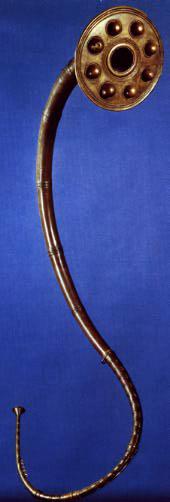
LURS
The Lur is a Bronze Age musical instrument. Lurs were usually made
in symmetrical pairs, with identical tuning.
The Lur is known from Norway, Sweden and north Germany but most, 37,
have been recovered from Danish bogs. The earliest find is from the end
of the 18th century.
The treatment these Lurs have received shows clearly how conservators
have been influenced by changing ethical standards.
In earlier times the metal was cleaned in acid or heated "so that
the bronze acquired its natural light yellow colour." Bulges were
smoothed out and the sections of tube were soldered together, using copper
tubes. The idea was to make the lurs playable, to investigate their pitch
and timbre.
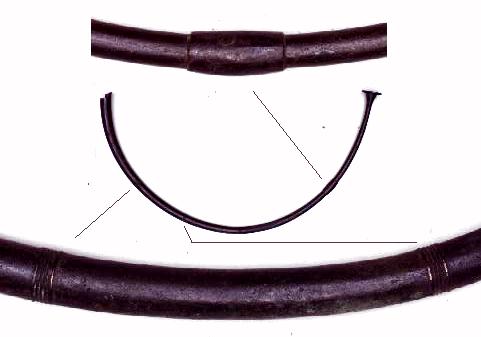
A fragment of a Lur from Nyrup (centre), with enlargements of an
ancient repair (above) and a recent repair (below). This section was found
in two pieces in 1910 and sent to the National Museum in 1926. By that
time the two pieces had been soldered together. The museum register records:
"... in the Bronze Age the tube had been repaired with a 0.035 m wide
plate, that is still attached, at a point 0.2 m from the under side of
the edge of the mouth cup. This patch must cover the joint between the
lur's first two sections..." .
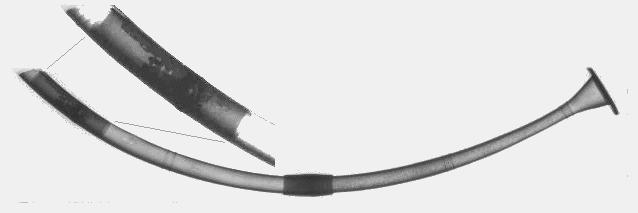
This X-ray picture shows the ancient repair, in the middle.
The modern repair can be seen, with an enlargement, at the left of the
picture.
We conserve more modestly now. A pair of lurs recovered
in 1988 from a peat stack in Ulvkær in Vendsyssel provided an opportunity
to investigate an unconserved pair of instruments.
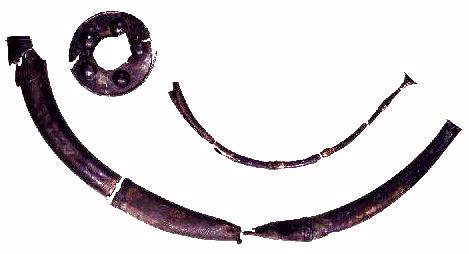
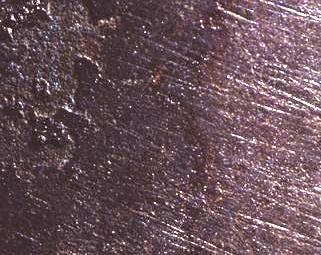
Lur from Ulvkær, in 1988, before conservation. The close up shows
polishing marks from the original Bronze Age surface. We cannot be sure
that traces found on the lurs discovered in the last century are original,
or the result of a restoration.
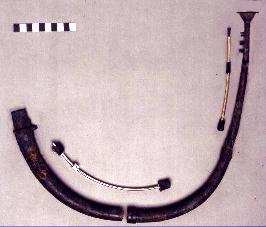
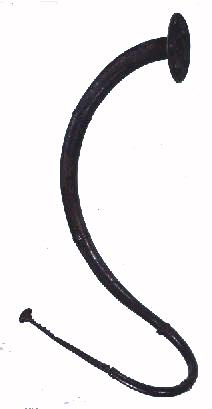 Restoration
and mounting of the lur from Ulvkær. The mouthpiece was found in several
pieces. An ingenious support allows the instrument to be hung for exhibition
without using glue or solder.
Restoration
and mounting of the lur from Ulvkær. The mouthpiece was found in several
pieces. An ingenious support allows the instrument to be hung for exhibition
without using glue or solder.
Back to the introduction






 Restoration
and mounting of the lur from Ulvkær. The mouthpiece was found in several
pieces. An ingenious support allows the instrument to be hung for exhibition
without using glue or solder.
Restoration
and mounting of the lur from Ulvkær. The mouthpiece was found in several
pieces. An ingenious support allows the instrument to be hung for exhibition
without using glue or solder.